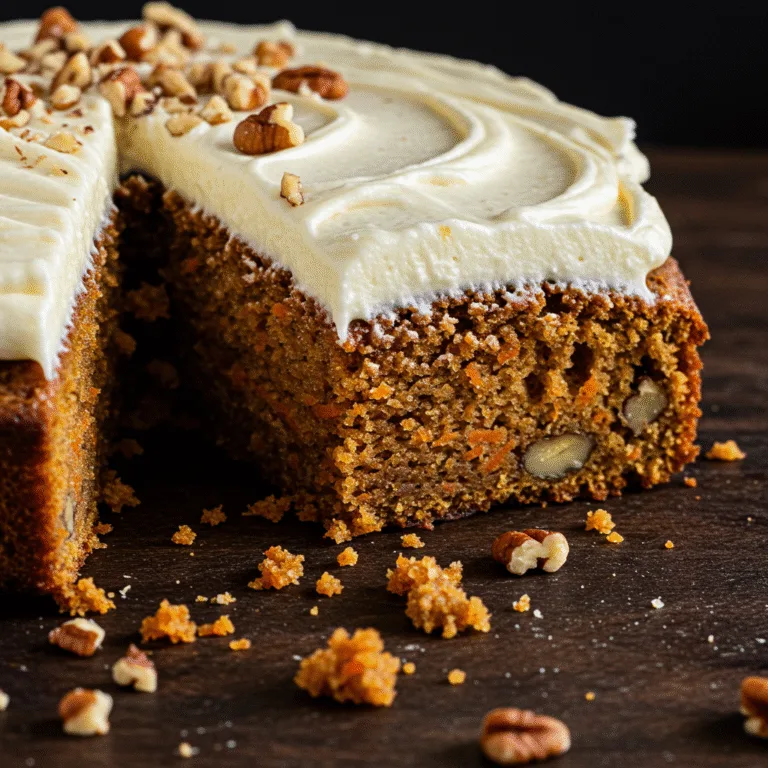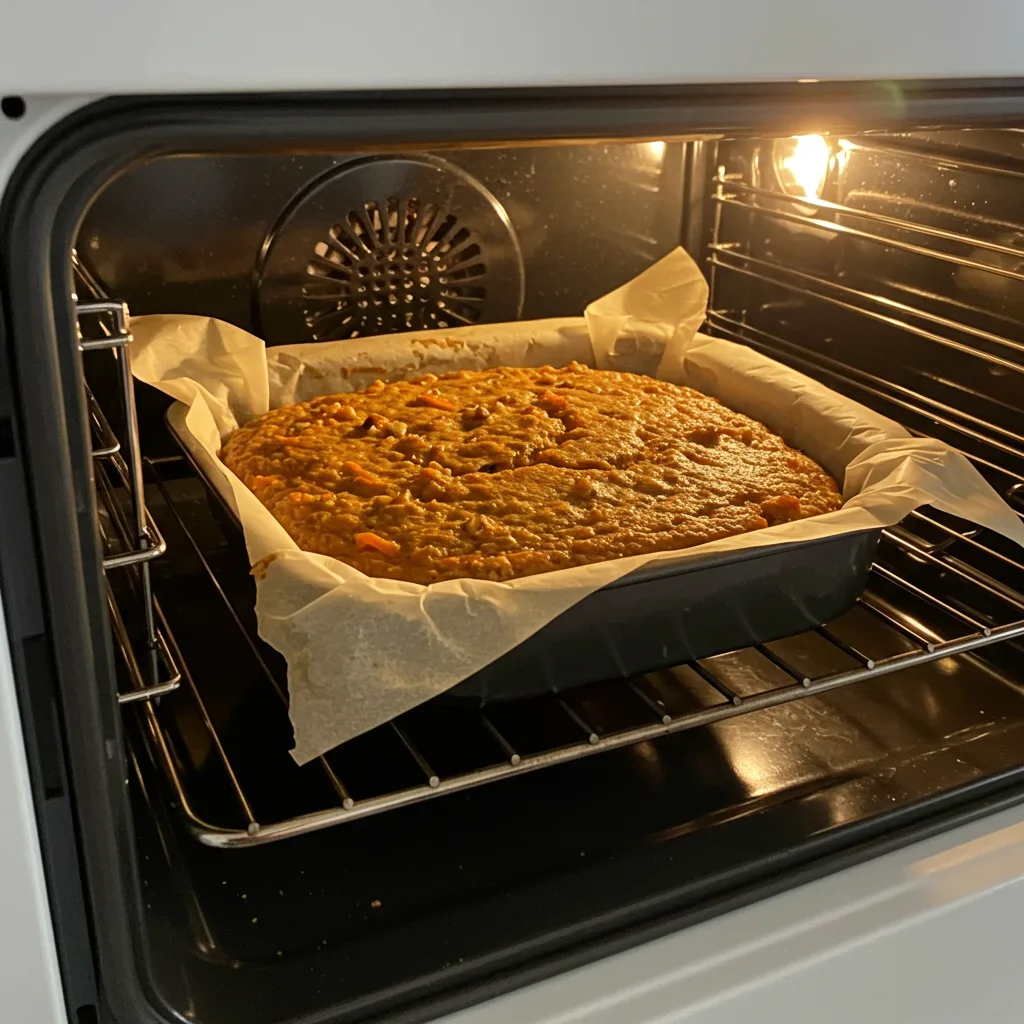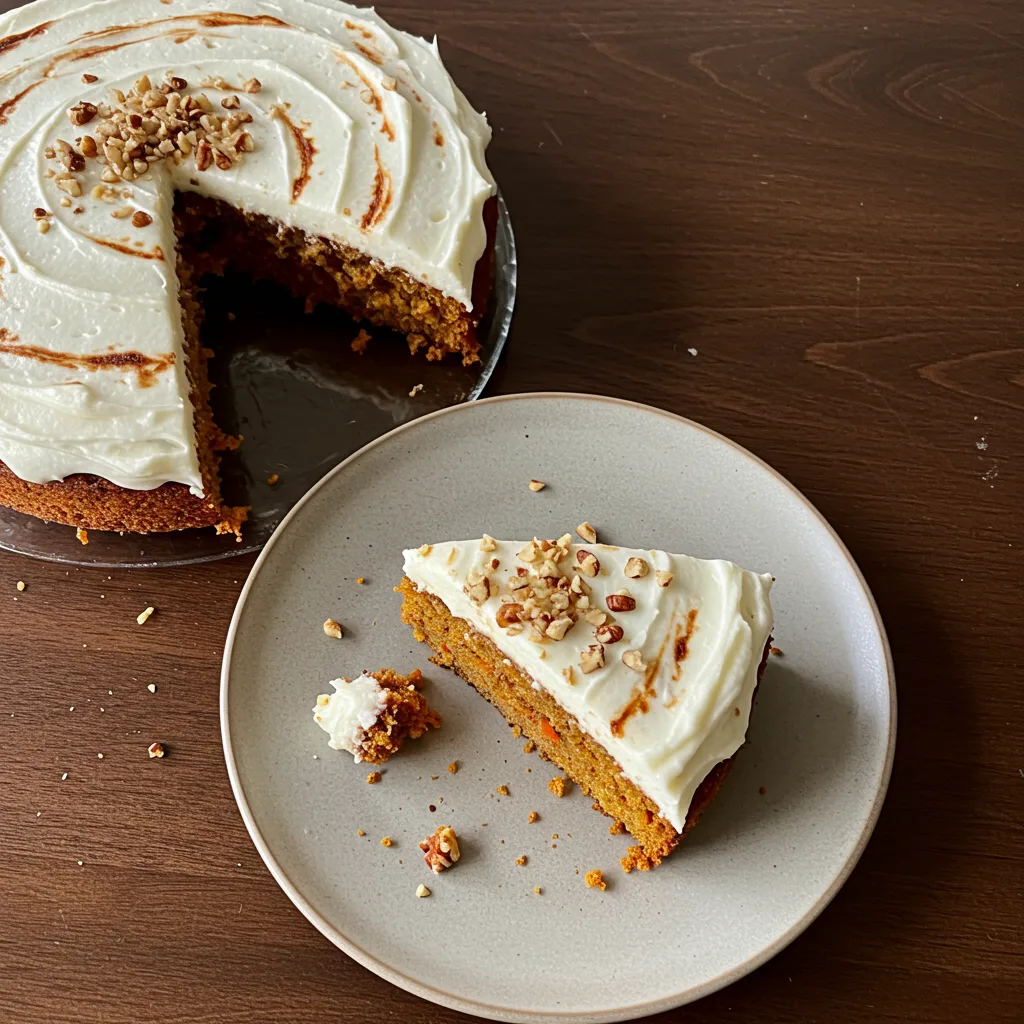
Craving carrot cake while living a low-carb lifestyle? You’re in for a treat. In this article, I’ll show you exactly how to make a rich, moist keto carrot cake that tastes like the real deal—without spiking your carbs. Whether you’re new to baking or already on a keto journey, you’ll discover how to create this bakery-worthy cake using wholesome, keto-friendly ingredients and easy swaps. Plus, I’ll answer the most common keto carrot cake questions, offer ingredient tips, and share my own baking story for inspiration. Let’s turn classic comfort food into a delicious, low-carb memory!
Table of Contents

Keto carrot cake
- Total Time: 45 mins
Description
A rich, moist keto carrot cake made with almond and coconut flours, sweetened with erythritol, and finished with a tangy cream cheese frosting. Low-carb, gluten-free, and perfect for celebrations or everyday cravings.
Ingredients
1 1/2 cups almond flour
1/4 cup coconut flour
1 1/2 tsp baking powder
1 tsp ground cinnamon
1/2 tsp ground nutmeg
1/4 tsp ground ginger
1/4 tsp ground cloves
1/2 tsp salt
4 large eggs
1/2 cup unsalted butter (melted) or coconut oil
3/4 cup erythritol or monk fruit sweetener
1 tsp vanilla extract
3/4 cup finely grated carrots
1/2 cup chopped walnuts or pecans (optional)
Cream Cheese Frosting:
8 oz full-fat cream cheese (softened)
1/4 cup unsalted butter (softened)
1/2 cup powdered erythritol
1 tsp vanilla extract
Chopped nuts or cinnamon for garnish (optional)
Instructions
Preheat oven to 350°F (175°C). Grease or line an 8-inch cake pan with parchment paper.
In a large bowl, whisk together almond flour, coconut flour, baking powder, cinnamon, nutmeg, ginger, cloves, and salt.
In another bowl, beat eggs with melted butter (or coconut oil), erythritol, and vanilla extract until smooth.
Combine the wet and dry ingredients, stirring until just mixed.
Fold in grated carrots and nuts if using.
Pour the batter into the prepared pan and smooth the top.
Bake for 25–35 minutes or until a toothpick inserted in the center comes out with just a few crumbs.
Let the cake cool completely in the pan.
Meanwhile, make the frosting: beat cream cheese, butter, powdered erythritol, and vanilla until fluffy.
Once the cake is cool, frost generously. Garnish with extra nuts or a dash of cinnamon if desired.
Slice and serve! Store leftovers covered in the fridge for up to 5 days.
Notes
If you prefer a sweeter cake, adjust sweetener to taste.
Grate carrots finely to keep the cake moist and low-carb.
This recipe can be doubled for a layer cake or halved for cupcakes.
- Prep Time: 15 mins
- Cook Time: 30 mins
- Category: Cake
- Method: Backing
- Cuisine: American
The Story & Why Keto Carrot Cake Is My Favorite Guilt-Free Bake
What makes keto carrot cake truly special is how it balances indulgence and health. Using almond flour and coconut flour keeps the cake moist and dense without the carbs of wheat flour. Natural sweeteners like erythritol and monk fruit mimic the flavor of traditional carrot cake, so you never feel deprived. Yes, there are carrots, but only just enough to get that classic taste without throwing off your macros. It’s about celebrating traditions—just with a modern, low-carb twist.
Key Ingredients and Smart Substitutions for Keto Carrot Cake
When baking keto carrot cake, your choice of ingredients is the secret to nailing that classic flavor and texture—without breaking your carb budget. Traditional carrot cake relies on wheat flour and sugar, but keto bakers get creative with wholesome alternatives that taste just as good, if not better.
Low-Carb Flour Alternatives: The Foundation
The heart of any keto carrot cake is a flour blend that mimics classic cake while keeping carbs low. Almond flour brings moisture and a slightly nutty flavor, while coconut flour adds structure and a touch of sweetness. Blending the two ensures a cake that’s dense, rich, and never dry. If you’re curious about working with nut flours, check out my guide on almond flour basics for extra tips and tricks.
Sweetening Without Sugar: Erythritol, Monk Fruit, and More
Keto baking skips white sugar entirely, but you’ll never miss it. Instead, choose a blend of erythritol, monk fruit sweetener, or stevia. These sugar substitutes keep your cake sweet and satisfying, all while being blood sugar friendly. Want to swap out sugar in other bakes too? My keto chocolate chip cookies use similar sweeteners for the same delicious effect.
Can You Really Use Carrots on Keto?
You might wonder: are carrots even keto friendly? Carrots do contain natural sugars, but when you grate and use just a small amount—usually about half a cup for a whole cake—they add flavor and moisture with minimal carb impact. Some recipes go a step further, substituting part of the carrot with shredded zucchini or pumpkin. This little trick helps keep your net carbs ultra-low while still delivering the carrot cake experience. If you’re looking for more ideas on low-carb veggie swaps, my zucchini bread is a must-try.
Next up, I’ll share a step-by-step process for making the perfect keto carrot cake at home—foolproof, even if you’re new to baking.
Step-by-Step Keto Carrot Cake: From Mixing Bowl to Frosted Slice
Baking your own keto carrot cake is a simple, satisfying process that anyone can master with the right guidance. Let’s break it down into clear steps so you get bakery-quality results at home, even if you’re new to keto recipes.
Making the Batter: Building Fluffy Texture
Begin by combining almond flour, coconut flour, baking powder, cinnamon, nutmeg, and ginger in a large bowl—this is where your cake gets its signature warmth and structure. Stir these ingredients together thoroughly to distribute the spices evenly.
In a second bowl, whisk together the eggs, melted butter (or coconut oil if you prefer a dairy-free version), vanilla extract, and your favorite keto-approved sweetener. Once smooth, pour the wet mixture into the bowl with your dry ingredients. Mix just until everything comes together to form a smooth, thick batter. Overmixing at this point can make the cake dense.
Gently fold in the grated carrots, making sure they’re spread throughout the mixture. For a bit of texture and rich flavor, add a handful of chopped pecans or walnuts if you like. This step brings a classic carrot cake bite, but keeps the carbs in check.
Baking and Frosting: Bringing It All Together
Pour your batter into a prepared cake pan—lined with parchment or lightly greased. Slide it into a preheated oven at 350°F (175°C) and bake for about half an hour, or until a toothpick comes out clean from the center.
While the cake cools on a rack, beat together softened cream cheese, butter, vanilla, and powdered erythritol to make a luscious, keto-friendly frosting. Once the cake has cooled completely, spread the frosting on top and finish with a sprinkling of nuts or cinnamon if desired.
With every forkful, you’ll enjoy a moist, flavorful cake that’s proof you don’t need sugar or white flour to make a special dessert. If you love baking at home, you’ll also want to check out my keto coconut cupcakes and easy sugar-free apple crisp for more sweet, low-carb inspiration.

Tips, Mistakes to Avoid, and Creative Ways to Serve Keto Carrot Cake
Every baker, whether a beginner or seasoned pro, knows that the difference between a good cake and a truly memorable one often comes down to a few simple tricks and careful choices. Here’s how to make your keto carrot cake come out perfectly every time—and ways to serve it that will keep everyone coming back for more.
Foolproof Tips for Keto Carrot Cake Success
1. Measure Carefully: Since almond and coconut flours are more absorbent than wheat flour, even a small variation can affect your cake’s texture. Use a digital kitchen scale if you can, and level off measuring cups for accuracy.
2. Check Doneness Early: Begin testing your cake a few minutes before the timer goes off. Insert a toothpick into the center; if it comes out with a slight crumb, your cake is ready. Waiting for it to be bone-dry can lead to a cake that’s more crumbly than moist.
3. Let It Cool Completely Before Frosting: Keto carrot cake is delicate when warm. Allowing it to cool fully before adding your cream cheese frosting prevents melting and helps the flavors settle. For more tips on handling keto baked goods, my guide on preventing crumbly keto cakes can help you troubleshoot any issues.
4. Adjust Sweetness to Taste: Everyone’s palate is a bit different, especially with sugar substitutes. Taste your batter before baking and adjust the amount of sweetener if needed.
Avoiding Common Pitfalls
One of the most frequent mistakes in keto baking is not accounting for the different ways low-carb flours behave compared to traditional ones. Mixing too much, skipping the sifting, or using too many carrots can lead to a dense, gummy cake. Start with the basic recipe, then experiment as you grow more confident. If you’re interested in swapping veggies or playing with flavors, try substituting some carrots with shredded zucchini, or even experimenting with a touch of unsweetened coconut, as I suggest in my keto coconut carrot muffins.
Serving and Storing Ideas
Keto carrot cake is delicious served just as it is, but you can dress it up for any occasion. Garnish with extra chopped nuts, a dusting of cinnamon, or even a few unsweetened coconut flakes. This cake keeps well in the fridge for up to five days and freezes beautifully in slices—perfect for meal prep or a quick treat. Pair a slice with your morning coffee or serve it as a special dessert after a cozy family meal, just like my keto pecan pie bars that everyone raves about during the holidays.
With a little care and creativity, you’ll soon be baking keto carrot cake that everyone loves—whether they’re low-carb or not.

For more recipes follow me in Facebook and Pinterest
Frequently Asked Questions About Keto Carrot Cake
Why can’t I eat carrots on keto?
Carrots contain more sugar and starch than many keto-friendly vegetables, so their carbs can add up if you eat a lot of them. For those following a strict ketogenic diet, larger portions might push you over your daily carb target. However, using just a little fresh carrot in a recipe—like what’s called for in this carrot cake—usually fits within most people’s limits. The important thing is to keep your serving size in check and always keep track of your total carbs for the day.
What could I use instead of white sugar when making carrot cake on keto?
If you want your carrot cake to stay keto, swap out regular sugar for sweeteners like monk fruit, erythritol, or stevia. These options bring sweetness to your cake without affecting your blood sugar or knocking you out of ketosis. They blend in seamlessly, so you still get that classic dessert taste, minus the carbs.
What kind of cakes are suitable for a keto diet?
Keto-friendly cakes are made with ingredients that keep carbs low, such as nut-based flours (like almond or coconut), and sweeteners that won’t spike your blood sugar. These recipes usually include healthy fats and skip all-purpose flour. You’ll find options like chocolate cake, coconut cake, carrot cake, and cheesecake that all work well for a keto lifestyle. For even more keto dessert inspiration
Are canned carrots keto friendly?
Canned carrots are not a great choice for keto because they’re often packed in water with added sugars or syrups. Even plain canned carrots can be a bit higher in carbs due to processing. When making keto carrot cake, it’s best to use fresh carrots in small amounts and shred them finely to keep the carbs as low as possible.
Conclusion
Making keto carrot cake at home means you never have to miss out on your favorite flavors—even on a low-carb lifestyle. By choosing almond and coconut flours, natural sweeteners, and just the right touch of carrot, you can enjoy a classic dessert that’s every bit as moist, rich, and satisfying as the original. Whether you’re baking for a celebration or just treating yourself on a cozy night in, this recipe proves that eating keto is anything but restrictive. Try it for yourself and see why it’s a favorite in my kitchen—and soon to be in yours!


